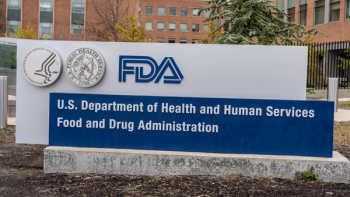
- Pharmaceutical Executive-10-01-2009
- Volume 0
- Issue 0
Science and Safety
All the focus on drug safety raises concerns about FDA delays in approving new drugs for market.
New leaders at the Food and Drug Administration are moving aggressively to address charges of incompetence and ineffectiveness that have roiled the agency in recent years. The Government Accountability Office (GAO) added FDA to its High-Risk list of government programs at the beginning of the year, largely due to inadequacies in drug oversight. GAO and other critics acknowledged perceived shortfalls in government funding as a prime factor, along with the rising complexity of medical technology and increased globalization of biomedical production.
Jill Wechsler
To make FDA more efficient and competent, commissioner Margaret Hamburg has reorganized her executive office to emphasize the importance of food safety and scientific integrity and to quickly inaugurate agency involvement in tobacco regulation. Hamburg is broadcasting FDA's intent to aggressively enforce manufacturing and marketing rules and to vigorously implement the multiple requirements established by the FDA Amendments Act of 2007 (FDAAA).
A sign of the activist tone at FDA is the steady flow of new regulations and policies. One set of new rules aims to expand patient access to investigational medicines by finalizing several proposals long sought by patient advocates. The policy makes it easier for seriously ill individuals to obtain unapproved drugs under the treatment IND policy or to have early access to an approved drug for an unapproved indication. Sponsors gained important clarification on when they may charge patients for an experimental drug outside a clinical trial.
Another recent proposal requires manufacturers to submit postmarket adverse event (AE) reports electronically. Leading pharma companies already file 80 percent of individual case safety reports electronically under a pilot program testing FDA's Electronic Submission Gateway. The new policy aims to make it easier for small biotech firms and medical device makers to follow suit by establishing a new Web portal for agency-wide safety reporting as part of FDA's MedWatch Plus initiative.
The e-filing rule makes few changes in the scope and timing of manufacturer AE reports and continues to utilize standards for data elements and format established by the International Conference on Harmonization that have been adopted in Europe and Japan. For these reasons, the agency anticipates minimal compliance costs for industry. FDA, however, will save $2.4 million a year by eliminating the manual conversion of paper reports to electronic form. More important, though, will be speedier access to critical safety information; FDA says that reviewers are able to obtain electronic safety submissions in two days, compared to two weeks to get paper reports into the agency's Adverse Event Reporting System.
Drug safety officials also are developing guidance on conducting observational studies using large data bases, along with policies for reducing confusion over the names of new drugs. There's even a hint that FDA may try to finalize a massive set of safety reporting rules for drugs and biologics ("The Tome") after years on hold.
Struggling With Safety
One prominent FDAAA goal was to compel manufacturers to launch and complete post-approval safety studies on time. There seems to be progress in this area, according to FDA's annual report on the status of postapproval studies issued last month. FDA should improve its tracking and review of these studies following an assessment of pending and completed postmarket obligations by Booz Allen Hamilton [see sidebar].
More Studies "On Time"
Risk Evaluation and Mitigation Strategies (REMS) also are more visible, although most of these postapproval safety programs require manufacturers only to issue MedGuides for pharmacists to hand patients filling new prescriptions. Only a few REMS require more formal plans for communicating risks to health professionals or more extensive "elements to assure safe use," such as limited distribution programs.
The unstated tradeoff for more investment in postapproval drug safety monitoring is supposed to be a less conservative agency stance in approving new drugs for market. But the jury is still out on whether FDA reviewers have confidence that these postmarketing initiatives will deflect outside criticism and calm internal dissent. The agency appears to be approving more new molecular entities (NMEs), but taking longer to do so, as many reviews go beyond the first review cycle time frame.
In fact, the U.S. may be falling behind Europe in approving innovative therapies for patients. At a meeting last month sponsored by the Institute of Medicine (IOM) to evaluate post-FDAAA safety initiatives, Merck executive vice president Peter Hoenig noted that first cycle approval trends are down and that user fee approval dates are "routinely missed" due to increased scrutiny of safety issues. FDA is "clearly struggling" with postmarket safety demands, he said, suggesting that "drug lag" may be rearing up once more as European regulators approve some new drugs for market faster than in the US.
John Jenkins, director of the Office of New Drugs (OND) in the Center for Drug Evaluation and Research (CDER), responded that it's unclear whether FDA reviewers have become more conservative in assessing new products. He sees no dramatic fall-off in NME approvals, but admitted that a decision to establish a REMS late in the review process will rule out a quick approval.
It also takes time and resources to determine the scope and timing of postmarketing studies, Jenkins added. Instead of assessing sponsor proposals for the scope and schedule of safety studies, FDA now has to set the time lines and research parameters, some thing that is very difficult for reviewers to calculate, Jenkins noted. Because some studies are likely to involve thousands of patients, or more, CDER is planning to ask advisory committees to weigh in on acceptable postmarket study designs, number of patients and end points. The aim is to obtain "public buy-in" that will help FDA deal with second-guessing later on if a study is delayed or changed, Jenkins commented. Of course, scheduling more advisory committee meetings may delay approvals even more.
Stress on Science
More consultation with outside experts fits the stated goal of commissioner Hamburg to position FDA as a science-based organization where politics doesn't override medical and technical judgment in making regulatory decisions. Hamburg hopes that these and other organizational and policy changes will deal effectively with internal disputes over product safety and approval decisions and avoid public controversies, such as that which delayed approval of an over-the-counter version of the Plan B emergency contraception pill.
One sign of the times is Hamburg's decision to bring new leadership to the Center for Devices and Radiological Health (CDRH). Veteran FDA official Dan Schultz resigned in August as CDRH director in the wake of several high-profile device safety cases, plus internal whistle blower complaints about management ignoring staff concerns regarding safety and efficacy testing of new products seeking market approval. FDA chief scientist Jesse Goodman has the task of ensuring scientific integrity in agency deliberations through a new office to resolve scientific disputes within the agency and to oversee advisory committees.
At the August meeting of FDA's Science Advisory Board, Hamburg highlighted the importance of strengthening regulatory science as an academic field, noting that it has atrophied compared to the surge in biomedical research investment by the National Institutes of Health and other research organizations. She acknowledged concerns about the slim pipeline for new drugs and medical products and emphasized the need to "revitalize and re-energize" support for the Critical Path Initiative. Another assignment for Goodman is to make the case for FDA support of high-quality scientific projects under Critical Path, along with personalized medicine and comparative effectiveness research.
Concerns about the "black box" aspects of FDA operations were raised by biotech companies and venture capitalists at a recent meeting with FDA officials and the White House Office of Science and Technology Policy. Hamburg agreed that a lack of transparency about the FDA review process and regulations can be "very stifling to innovation," while an increased focus on regulatory science can support development of new pharmaceutical products.
Jill Wechsler is Pharmaceutical Executive's Washington correspondent. She can be reached at
Articles in this issue
about 16 years ago
Finding the Sweet Spotabout 16 years ago
Explaining Innovationabout 16 years ago
The Book on Danielabout 16 years ago
Innovation By Designabout 16 years ago
Making Big Wavesabout 16 years ago
End the "Hard Stop"about 16 years ago
Think DifferentNewsletter
Lead with insight with the Pharmaceutical Executive newsletter, featuring strategic analysis, leadership trends, and market intelligence for biopharma decision-makers.




